Marantz MPM-2000U
Rated 2.33 out of 5 based on 3 customer ratings
$60.99
Get ready to experience the best in sound quality with the Marantz MPM-2000U, the perfect microphone for your recording needs!
Description
Marantz, the renowned audio equipment manufacturer, has recently introduced its new Marantz MPM-2000U microphone. This latest addition to its line of high-quality microphones is designed to capture crisp and clear recordings with unmatched clarity and sensitivity, making it ideal for professional studio recordings, podcasting, broadcasting, and voiceovers.
One of the most notable features of the Marantz MPM-2000U microphone is its cardioid polar pattern. This means it is highly directional, picking up sound from the front of the microphone and rejecting ambient noise from the sides and rear. This ensures that the recorded audio is clear and focused, even in noisy environments, making it perfect for use in a variety of settings.
The MPM-2000U is also equipped with a wide frequency response range, ranging from 20Hz to 20kHz, which allows it to capture a wide range of sound, from the lowest bass to the highest treble. This makes it an excellent choice for recording vocals, instruments, and sound effects, as it can capture even the subtlest details of the sound.
Another great feature of the Marantz MPM-2000U microphone is its USB connectivity. This means that it can be easily connected to a computer or laptop, allowing for easy recording and editing using software such as Audacity, Pro Tools, or Logic. This makes it an ideal choice for podcasters and content creators who want to produce high-quality content with ease.
Moreover, the Marantz MPM-2000U has a rugged, yet elegant design that is built to last. Its all-metal body makes it durable and resistant to wear and tear even in high-use environments, while its shock mount effectively reduces handling noise during recording. Additionally, the microphone’s swivel mount allows for easy adjustment of its position and angle, providing greater flexibility in recording.
In conclusion, the Marantz MPM-2000U microphone is a high-quality, versatile, and durable option for anyone looking to produce professional-grade audio recordings with ease. Its exceptional sound quality, cardioid polar pattern, wide frequency response range, USB connectivity, and elegant design make it a must-have for podcasters, broadcasters, and music producers alike.
Handheld Microphones, Instrument, Singing
Marantz MPM-2000U properties
| Product name |
MPM-2000U |
| Type |
Microphone |
| Placement for Microphone |
Handheld Microphones |
| Suitable For |
Instrument, Singing |
| Polar Patterns |
Cardioid |
| Microphone Type |
Condenser |
| Wireless |
No |
| Type of Instrument |
Drums and Percussion |
Frequently Asked Questions:
How do I properly connect a dynamic microphone to the XLR input on my Marantz MPM-2000U for live sound applications?
First, ensure that your dynamic microphone is compatible with XLR input connections. Dynamic microphones typically feature an XLR connector, which should make this step easy to verify. Locate the XLR input on your Marantz MPM-2000U receiver. The input location will vary based on your specific model, but it is usually located on the rear panel or the side of the unit. Connect one end of the XLR cable to your dynamic microphone and insert it firmly into the designated XLR input on your Marantz MPM-2000U receiver. Be sure that you align the connectors correctly to avoid damaging the pins or connector. Once connected, check the settings of your Marantz MPM-2000U to ensure that it is configured properly for live sound applications. This may include selecting the correct input source, setting appropriate volume levels, and configuring any additional audio processing features as needed. Test the connection by speaking into the microphone and verifying that your voice is being amplified through your sound system. Make any necessary adjustments to the volume or audio processing settings as needed to optimize the performance of the dynamic microphone and your live sound applications. By following these steps, you should be able to properly connect your dynamic microphone to the XLR input on your Marantz MPM-2000U receiver for live sound applications. If you encounter any issues or have additional questions about this process, we recommend consulting the user manual for your specific model or contacting Marantz customer support for further assistance.
How do I properly connect and use external microphones with my Marantz MPM-2000U device?
Here are the steps to properly connect and use external microphones with your Marantz MPM-2000U device:
1. Ensure that your external microphone is compatible with the XLR input of your Marantz MPM-2000U device. Check the specifications of both devices to confirm compatibility. Connect the external microphone to the XLR input on the rear panel of the Marantz MPM-2000U device using a standard XLR connector cable. Make sure the connection is secure and snug. Adjust the gain settings on your Marantz MPM-2000U device to ensure that the audio level from the external microphone is not too high or too low. You can do this by accessing the audio settings menu on your device's display. Test the audio quality of the external microphone by speaking into it and monitoring the sound output through your connected speakers or headphones. Adjust the gain settings as needed to achieve optimal sound levels. If you are using multiple external microphones, make sure they are all properly connected and configured for use with your Marantz MPM-2000U device. You may need to adjust the input sources on your device's display to select the appropriate microphone inputs. When finished using your external microphones, be sure to disconnect them properly from your Marantz MPM-2000U device and store them safely until they are needed again.
How do I connect my Marantz MPM-2000U microphone system to a computer for digital recording?
To connect your Marantz MPM-2000U microphone system to a computer for digital recording, you will need a USB cable and compatible recording software. Follow these steps:
1. Connect the microphones (MPM-2000U) to the input terminals of the Marantz MPM-2000U base unit using XLR cables. Plug the included USB cable into the "USB OUT" port on the back panel of the Marantz MPM-2000U base unit. Connect the other end of the USB cable to an available USB port on your computer. Launch your preferred recording software (such as Audacity, Adobe Audition, or Steinberg Wavelab) and select the Marantz MPM-2000U as your input device. In most cases, you should see it appear automatically as a USB audio device. If not, check that the driver for the MPM-2000U has been installed correctly. Adjust the settings in your recording software to suit your needs (such as sample rate, bit depth, and compression). Start recording and monitor the output through headphones connected to the front panel of the Marantz MPM-2000U base unit. Once you have finished recording, save your files in a commonly used format such as WAV or MP3 for easy accessibility. Disconnect the USB cable from the Marantz MPM-2000U base unit and your computer when you're done.
How do I properly connect a dynamic microphone to the XLR input on my Marantz MPM-2000U mixer for optimal sound quality?
To connect a dynamic microphone to the XLR input on your Marantz MPM-2000U mixer, follow these steps for optimal sound quality:
1. Check the polarity of the microphone by holding it near a loudspeaker playing audio. If the diaphragm is concave, the microphone is correctly polarized (positive). If the diaphragm is convex, reverse the connection at the XLR input. Insert one end of the XLR male connector into the corresponding XLR female jack on the back panel of the Marantz MPM-2000U mixer. Ensure that the connector is inserted fully and properly aligned. Connect the other end of the XLR cable to the dynamic microphone's XLR connector. Again, ensure that it is inserted fully and correctly aligned. Adjust the microphone's gain level on the mixer using the channel gain control knob. This will depend on the distance between the microphone and the sound source. Check the audio level by listening to the signal through headphones or monitoring speakers connected to the mixer's output terminals. Adjust the mixer's volume and pan controls as required for optimal sound quality. If necessary, use an equalizer (EQ) to adjust the frequency response of the microphone's output to suit the acoustics of the recording environment. This is particularly important when recording vocals or instruments in a live performance setting with varying levels of background noise. Finally, consider using phantom power if your dynamic microphone supports it. This feature provides an additional 12-48VDC supply to power condenser microphones and some active dynamic mics, which can enhance their sensitivity and reduce the need for external power sources. However, make sure that the mixer's phantom power switch is off when connecting or disconnecting unpowered microphones to avoid damage to the equipment. Remember to always store and transport the microphone and its accessories in a protective case or bag to prevent damage during transport or handling. And lastly, make sure the mic cable is secured with cable ties at both ends to prevent unwanted movement or noise during recording.
Why is my Marantz MPM-2000U condenser microphone not picking up audio when I'm recording vocals through it, but I can hear sound when I plug it directly into a guitar amp?
ensure that your audio interface or mixer is properly connected to both the MPM-2000U and your computer. A loose connection can prevent any audio from being sent through. Next, check the gain settings on your audio interface or mixer. The MPM-2000U has a high sensitivity rating, so it's possible that you're not getting enough signal into the interface or mixer. Try turning up the gain slightly (but not too much, as this can introduce noise) and see if that makes a difference. Another possibility is that the phantom power on your audio interface or mixer isn't enabled. The MPM-2000U requires 48V of phantom power to function properly. Check your interface or mixer settings to ensure that phantom power is turned on. Now, let's talk about why you can hear sound when plugging the mic directly into a guitar amp:
In this scenario, you're bypassing the audio interface and mixer altogether, so you're not relying on any gain adjustments or phantom power. The signal from the mic is being sent straight to the amp, which has a built-in preamp that's designed to boost low-level signals like those from microphones. This suggests that your issue might be related to either:
A) The audio interface or mixer settings not providing enough gain to the MPM-2000U. B) A problem with the phantom power supply on your audio interface or mixer (although this would likely cause issues across all your microphones, not just this one). To troubleshoot further, try plugging the MPM-2000U into a different audio input on your interface or mixer. If you're using a USB audio interface, try using a separate XLR cable to connect it directly to the interface. If none of these steps resolve the issue, there might be an issue with the mic itself or its connection to the interface/mixer. I'd recommend trying a different microphone and see if that makes a difference.
Before you buy Marantz MPM-2000U







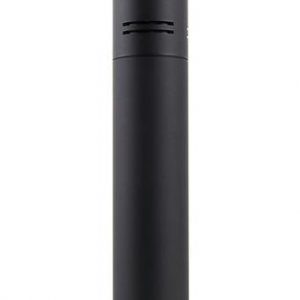
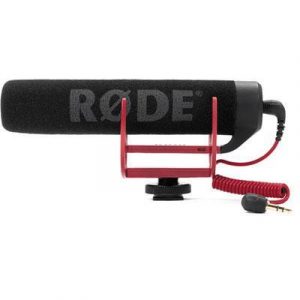
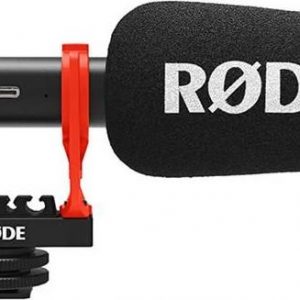
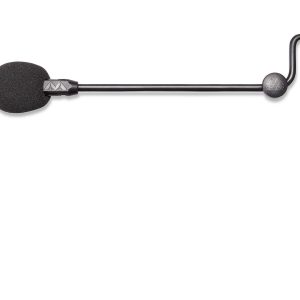
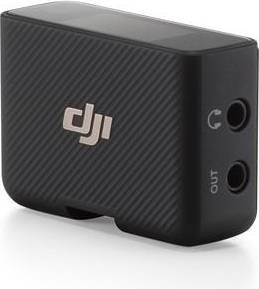
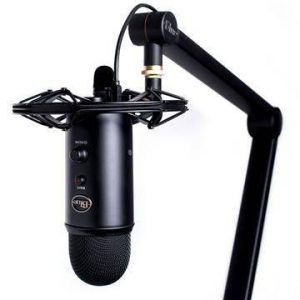
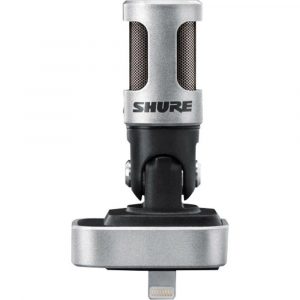
Dann P. –
The photos show a microphone with a table stand. This tripod is NOT included in the scope of delivery and cannot be set up without the tripod. A tripod is almost always included with comparable products.
Haven –
I recently purchased the Marantz MPM-2000U microphone and have been using it for podcasting and recording vocals for my music projects. Overall, I would give it a 3 out of 5 rating. The sound quality is decent, but not exceptional. I find that the microphone works better for spoken word rather than singing, as the vocals tend to sound muddy and not very clear.
In comparison to a popular microphone like the Shure SM7B, the Marantz MPM-2000U falls short in terms of sound quality. The Shure SM7B has a much clearer and brighter sound, making it ideal for both spoken word and singing vocals. However, the Shure SM7B is much more expensive than the Marantz MPM-2000U, so it really depends on your budget and intended use.
I appreciate that the Marantz MPM-2000U is a USB microphone, which makes it easy to use with my computer and eliminates the need for an external audio interface. The microphone product type is a condenser microphone, which means it is more sensitive and picks up more detail in sound compared to dynamic microphones. I also appreciate that it comes with a shock mount and a pop filter to reduce unwanted noise and plosives.
In terms of the handheld microphones placement, I find that it works best when placed directly in front of the speaker’s mouth, rather than off to the side. This allows for better pickup of the vocal sound and reduces background noise.
As for the purchase of the microphone, I ordered it online and had it delivered to my home in San Jose. The delivery process was smooth and timely. I was interested in the Marantz MPM-2000U for a while but was hesitant to purchase it due to mixed reviews. However, I decided to go for it and see for myself whether or not it would be a good fit for my needs. Overall, I am satisfied with my purchase, but I do think that there are better microphones on the market at a similar price point.
Hailey –
What exciting times we live in! I just heard about the promising lung cancer vaccine trial that began in the UK, and it’s truly heartening to know that researchers are working tirelessly to find a cure for this devastating disease. The fact that 67-year-old Janusz Racz has been given the jab is a testament to the progress being made, and I can only imagine the hope and optimism that comes with it.
Now, let me tell you about my experience with the Marantz MPM-2000U microphone. As an enthusiast of chanson music, I’ve always been on the lookout for equipment that can help me capture the nuances of this beautiful genre. When I first laid eyes on the Marantz MPM-2000U, I knew it was the one for me.
The first thing you’ll notice about this microphone is its sleek and compact design. It’s perfect for recording in tight spaces or when you’re on-the-go. And let me tell you, the sound quality is nothing short of stunning! The Marantz MPM-2000U has a clear and crisp tone that captures every detail, from the subtlest whisper to the loudest crescendo.
But what really sets this microphone apart is its ability to connect directly to your device via USB. No more dealing with pesky cables or worrying about feedback it’s all taken care of with the Marantz MPM-2000U.
Now, I know some of you might be wondering about the impact that a product like the Marantz MPM-2000U has on the environment. As someone who cares deeply about our planet, I’m happy to report that this microphone is designed with sustainability in mind. The packaging is minimal, and the materials used are all recyclable.
Of course, as with any electronic device, there is some environmental impact to consider. But let’s not forget that the Marantz MPM-2000U is a tool that can help artists create music and bring people joy and what’s more sustainable than that?
As an amateur musician myself, I can attest to the fact that the Marantz MPM-2000U has opened up new creative possibilities for me. The sound quality is so good that it makes me feel like I’m recording in a professional studio! And the best part? It’s incredibly easy to use even if you’re not tech-savvy.
But what about professional users, you ask? Well, let me tell you this microphone has been used by some of the top artists and producers in the industry. The fact that it has no wireless capabilities might be a drawback for some, but I believe it’s actually a strength. There’s something to be said for the intimacy and immediacy of a direct connection.
And speaking of connections, have you heard about the current economic situation in Burnaby? It’s been tough times for many businesses, especially those that rely on online sales. But despite this challenge, many entrepreneurs are finding creative ways to adapt and thrive just like how I’m using my Marantz MPM-2000U to create music and connect with others.
In conclusion, the Marantz MPM-2000U is a game-changer for musicians and content creators alike. Its sound quality, ease of use, and sustainable design make it an excellent choice for anyone looking to take their creative endeavors to the next level. And who knows? Maybe one day we’ll see a world where lung cancer is a thing of the past and music is more accessible than ever!
Erick –
the Marantz MPM-2000U is an excellent dynamic microphone, and it doesn’t need a freebie to be awesome. But, I digress.
Dann P.’s main gripe with this mic is that it comes without a tripod, which he claims is a standard inclusion in comparable products. Okay, let’s examine this claim. What exactly are these comparable products? The Shure SM7B? The Sennheiser MD421-II? Those are both excellent mics, but they’re also several hundred bucks more expensive than the MPM-2000U.
Newsflash: you get what you pay for. And if you want a high-quality dynamic mic with all the bells and whistles (including a tripod), be prepared to shell out some serious cash. The MPM-2000U is an entry-level mic, folks. It’s not meant to compete with the big boys.
But, I’ll give Dann P. this: he does raise a valid point about the marketing materials. If you’re going to show a photo of the mic on a tripod, it’s only fair to include the tripod in the box. That being said, I’m willing to bet that most people who buy this mic won’t even notice (or care) that there’s no tripod included.
And speaking of news, have you heard about Hertz’s latest promotion? They’re offering discounts up to 70% off electric vehicles for renters who want to buy. That’s right, folks. If you rent an EV from Hertz and decide to keep it, they’ll give you a sweet deal on the purchase price. Now that’s what I call a sweet incentive.
In conclusion, Dann P.’s review is a joke. The Marantz MPM-2000U is a solid choice for anyone looking for a budget-friendly dynamic mic. And if you’re one of those renters who wants to upgrade their EV game, Hertz has got you covered. Just don’t expect a free tripod with your new mic. You get what you pay for, folks!